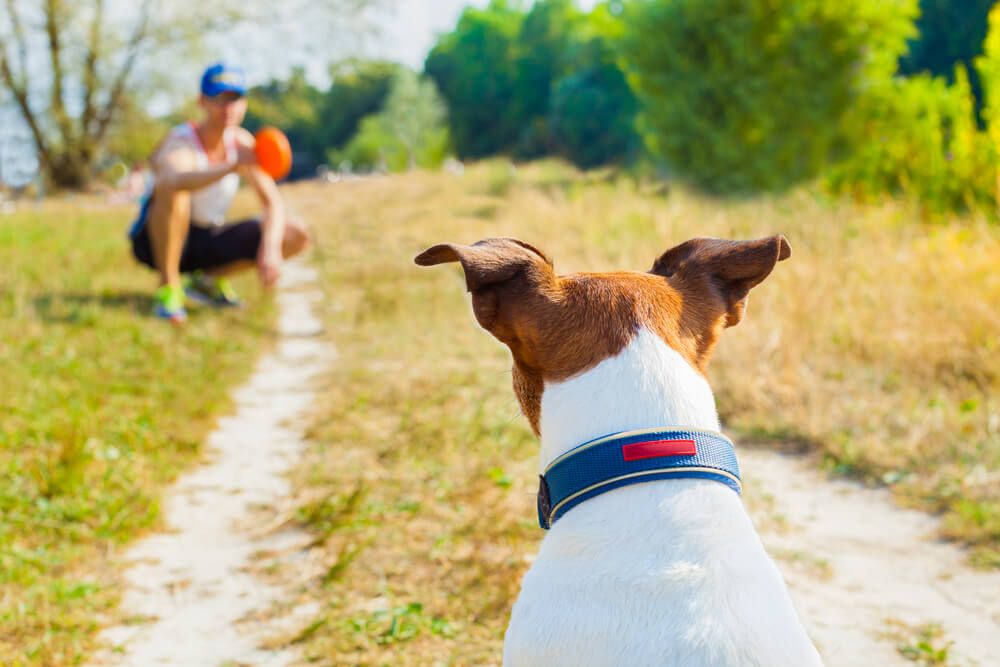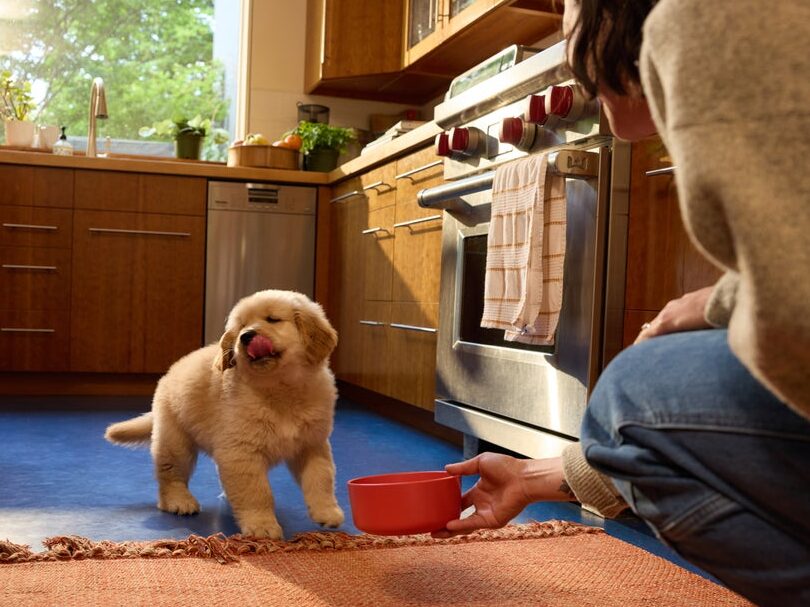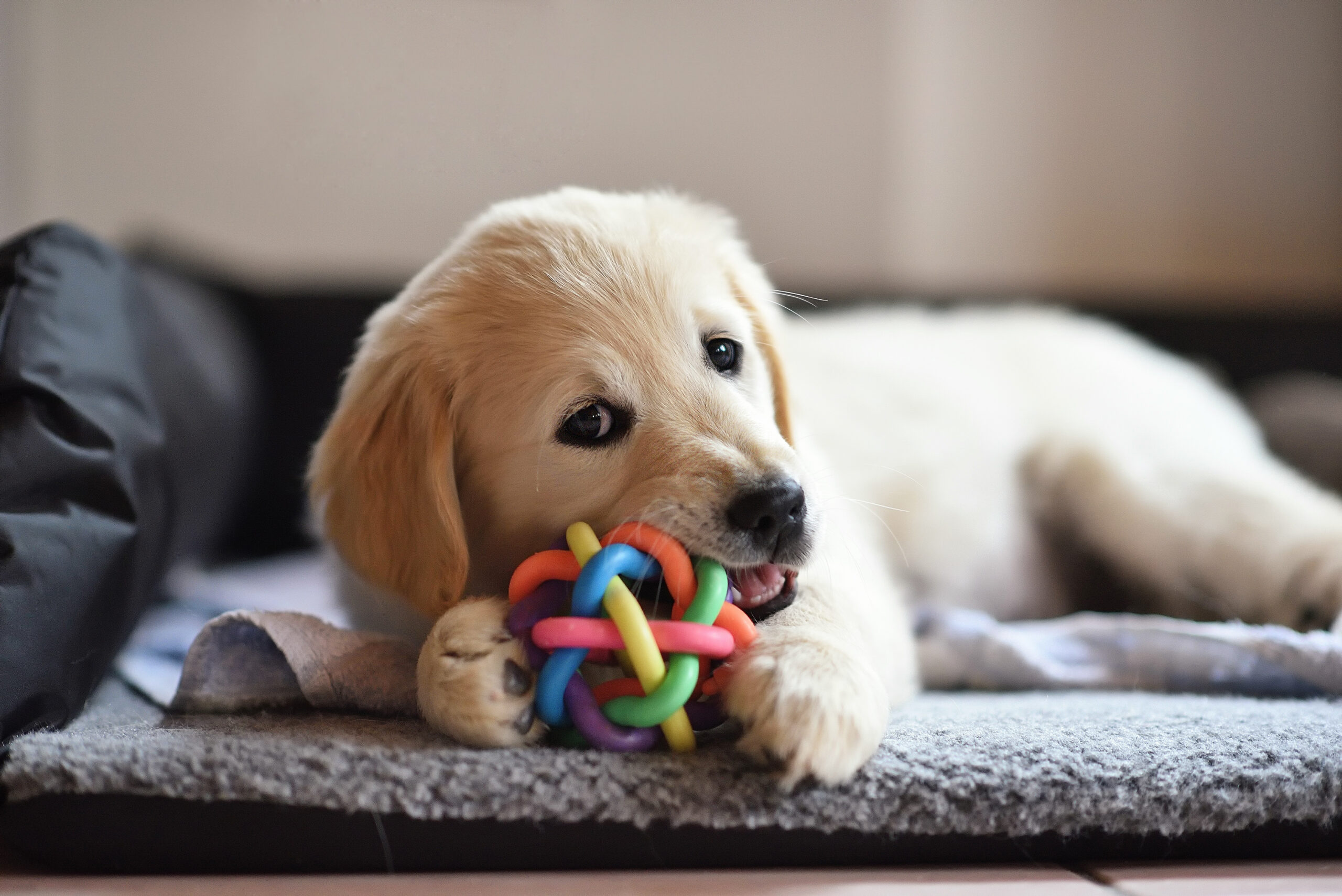Hey Ollie blog readers! We’re offering you an exclusive 60% OFF your starter box! Try now!
Like humans, dogs need both mental and physical exercise to stay engaged and be healthy. A lack of physical or mental stimulation can lead to both obesity as well as behavioral issues or compulsions. How do you know if your dog is getting enough exercise? We’ll outline the dog’s general needs and how to know if your pup needs its fitness program adjusted.
Dogs need different amounts of exercise at different stages of their life, assuming they’re healthy. Puppies do need quite a bit of exercise, but it is also important to remember that they also need a lot of sleep as well. The American Kennel Club reminds new pet parents that puppies need to sleep as much as 18-20 hours per day! Too much exercise and not enough sleep can make a puppy overtired and cranky. With a young puppy keep exercise sessions short, try 5-15 minutes and give your puppy time for a potty break and a nap after some vigorous physical activity. Don’t forget to ask your vet about how far your puppy can walk and how much playtime they will need as they grow up!
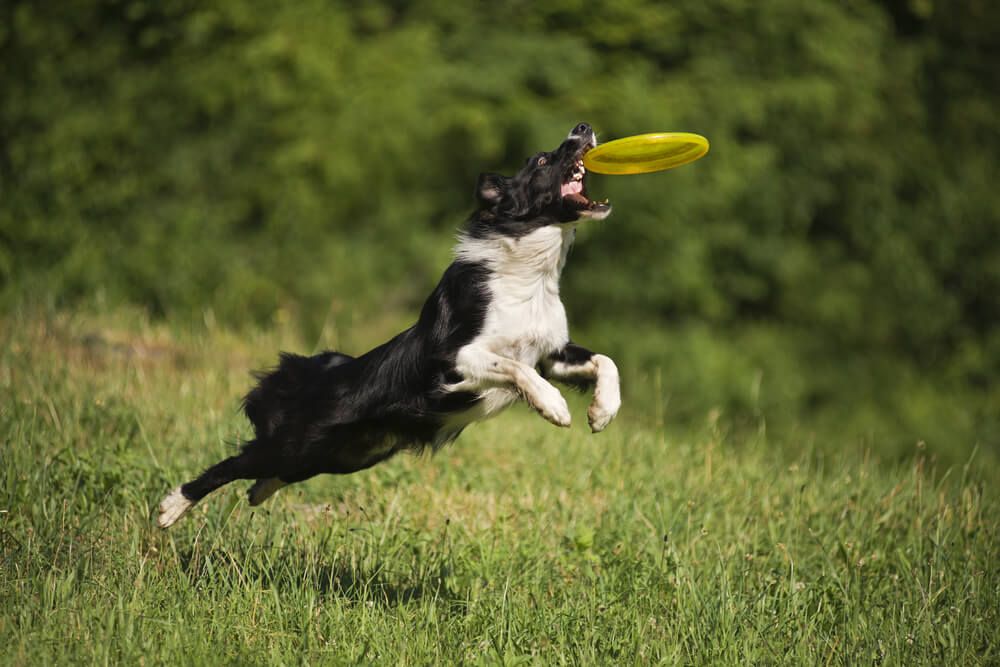
For adult dogs, the amount and type of exercise they will need may be highly dependent on their age and breed. Some breeds like pugs are happier to hang out on the couch, you may have to force them to work out. While others like an Australian Shepherd might need a lot more exercise as well as a job to do in order to really thrive.
Senior dogs (7 years and older) may need a bit less exercise, but they still do need to get some physical and mental activity. You may consider letting them set the pace on walks or trying some puzzles in the house if your older dog is struggling on longer walks due to arthritis, joint pain or another age-related condition.
5 General guidelines for exercising your dog
1. Engage your dog both mentally and physically
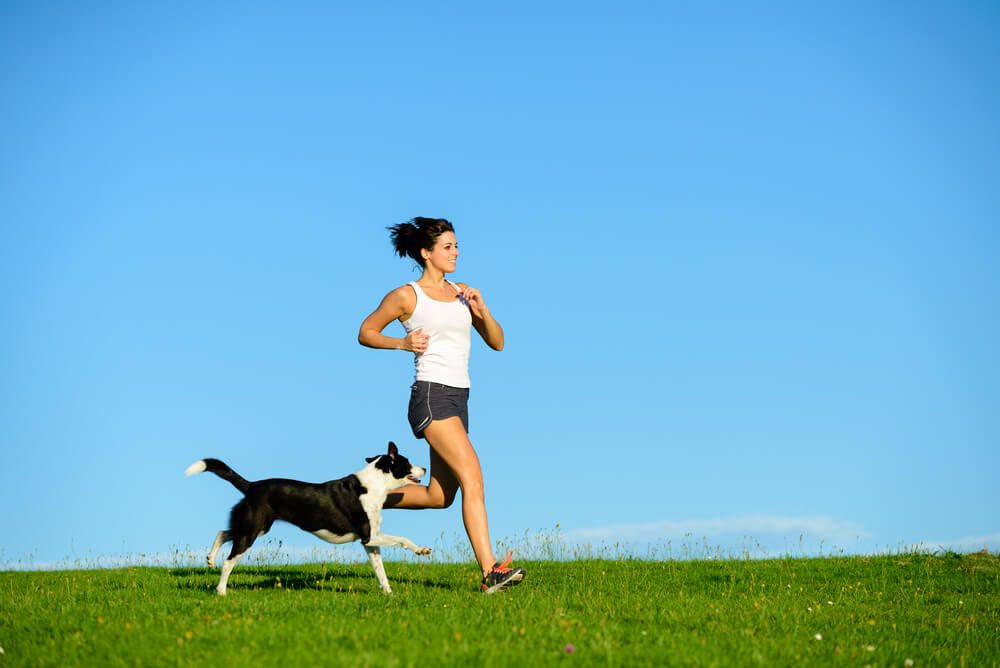
For most dogs, just running around is not going to be enough. You want to also engage their brains. This can be accomplished by working on a trick or playing a “game”. You could try fetch, tugging, a simplified version of hide and seek or even some nose work to keep your dog’s brain engaged. If you have a dog who loves to learn and you feel like you might run out of things to teach, try these 52 tricks. See how many your pup can learn and put together. Who knows, you may even end up earning an AKC trick title. For those who live in apartments or have a smaller space, try an interactive puzzle. The puzzles, combined with a few leash walks or a trip to the local dog park might be just what your pup needs to feel mentally and physically stimulated. If the weather is good, take your dog on a new walking route and let them enjoy some new smells and a change of scenery. Exercise doesn’t have to be dramatic or intense to be refreshing for both of you.
2. Avoid extreme temperatures
When working out with your dog outside, avoid extreme temperatures. On a hot day, pavement can get extremely hot very quickly and burn your pup’s paw pads. If the sidewalk is painfully hot to your bare feet, it will also be painful to your dog and can cause some serious burns. If you’re crossing streets, remember that blacktop can be even hotter than the sidewalk. On a very hot day limit time outside, try to stay on dirt or grass that is cooler for your dog. Pack some cold water to prevent dehydration or heatstroke. The same can be said for cold temperatures. You will want to watch out for ice and limit time outside to prevent frostbite or hypothermia. For smaller dogs or those who do not have thick coats, consider a jacket to keep them warm even on a shorter walk. If you have a brachycephalic dog like a pug, these dogs are more susceptible to extreme temperatures so use caution when exercising outdoors.
3. Make exercise fun for you and your dog
Exercising together can be a great bonding experience for you and your dog! While this post mostly talks about exercise for your dog, there’s no reason you can’t get a workout in with your pup. Some dogs make great running or swimming companions. While it might not be exercise for your dog, they might also enjoy lying next to your mat (or participating) in a yoga or pilates workout. As long as you both get opportunities to move, you can enjoy each other’s company in any workout you like.
4. Consult your vet about your pups exercise habits and needs
The amount and type of exercise your dog needs is as specific to your pup as your fitness needs are to you. Even though you might be the same age as a professional athlete, you don’t work out the same way they do. We’ve provided some general guidelines around how much exercise dogs need at different stages in their lives. You should talk to your vet about your pup’s exercise habits and needs. Always consult your vet before starting a new fitness program with your dog. This is especially true if your dog is overweight, has had knee or joint issues or has recently undergone surgery.
You want the vet to clear your pup for exercise first to prevent any unintended complications. At your pup’s annual wellness appointment your vet will probably ask about your dogs exercise routine. This is an ideal time to ask questions or discuss any changes you want to make.
Best exercises to do with your dog
1. Walking
This one is probably the easiest way to get some movement in with your dog. You’re probably walking your dog a few times a day if you don’t have a backyard for them to relieve themselves in. Even if you do have a backyard your dog should see more of the world then just what they can see in the yard. Make sure to get out and explore even if it’s just 15-20 minutes a day.
2. Jogging
If your dog has a little more pep in his step, consider jogging. If you have children, you can also (supervise) some chase games in the backyard. Kids and dogs love running around together so why not let them tire each other out? Remember to never leave kids and dogs unattended while playing.
3. Hiking
Walking or jogging gets much more interesting when you have a hiking trail. Your pup might enjoy the uneven terrain, additional smells and possibly even some plants and animal they’ve never seen before. When hiking with your dog, remember to obey all leash laws and clean up after your pup. No one wants to step in another dog’s poop on a hiking trail.
4. Swimming
If your pup enjoys the water, consider a swim. You can find a local dog beach or a dog-friendly pool. Whatever your pup prefers. Consider using a life jacket for inexperienced swimmers and never let your dog swim unsupervised.
5. Fetch
If you want your pup to do most of the work, consider a game of fetch. You can play fetch with pretty much any object – a tennis ball, a rope or even a plush toy. For dogs who like to work, you can teach them how to fetch specific objects – even have your dog bring you the newspaper, a snack or a drink. If your arm gets tired from throwing, you might want to invest in a Chuckit to make fetch easier to play as long as your dog is engaged. Watch out for a dog who becomes too obsessed with fetching. You should control when your game begins and ends.
In order to keep your dog at the ideal weight and keep them mentally stimulated, make exercise for your dog a priority. Like you, your dog might be less motivated to get outside on days when it is cold, windy and rainy, you can still find creative ways to move indoors. Whatever activity you choose, have a great time doing it.
The Ollie blog is devoted to helping pet parents lead healthier lives with their pups. If you want to learn more about our fresh, human-grade food, check out MyOllie.com.
Tagged As:

The nutrition your dog needs,
the food they want.

Enjoying our articles? Subscribe our Newsletters and get new articles directly to your inbox
You might also like
13 May 2025
8 MINS READ
Puppy Training Guide & Behavior Timeline
Bringing home a puppy is pure magic. It’s also pure chaos—tiny teeth, zoomies, accidents in the house, and moments that make you wonder if you’re raising a future genius or a tiny tornado. …
by Ollie Pets
10 May 2025
12 MINS READ
New Puppy Checklist: Guide To Prepare For A New Dog
Bringing home a new puppy? This checklist covers everything new dog owners need—from essential supplies to training, feeding, and first vet visits.
by Ollie Pets
3 April 2025
9 MINS READ
Home Remedies for Fleas on Dogs: 10 Natural Ways That Actually Work
Wondering what kills fleas on dogs instantly and naturally? If your pup is scratching like crazy, it may be time to take action. In this guide, we’ll show you the most effective home remedies for…
